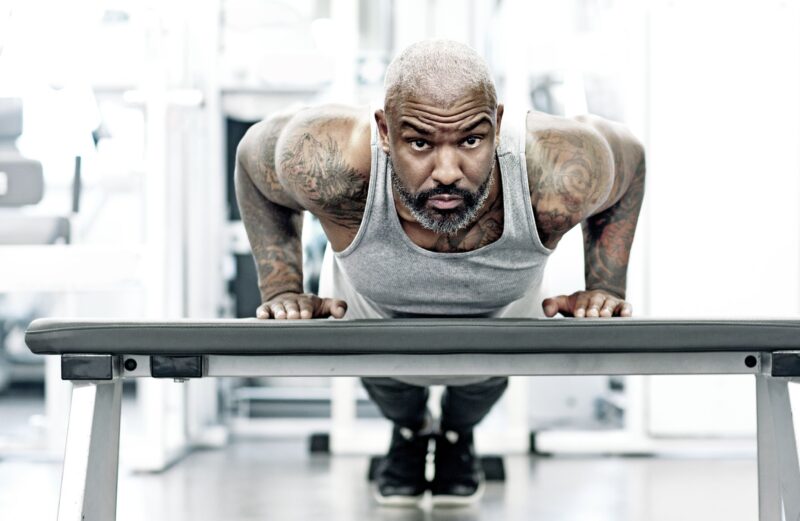The transition from prison to life on the outside can be an overwhelming journey, fraught with challenges that can trigger anxiety and emotional turmoil. For many, the ghosts of the past linger, casting shadows over hopes for a fresh start.
However, amid this tumult, a powerful ally often goes unnoticed: regular exercise. Engaging in physical activity not only fosters a sense of achievement but also acts as a crucial catalyst for mental well-being.
The rhythm of movement can provide structure in chaotic times, while the release of endorphins offers a natural antidote to stress. This article will explore how integrating exercise into daily life can transform the anxious struggles of recently released individuals into a more empowered and resilient existence, unlocking the door to new possibilities and brighter days.
Physical Health Improvements

Engaging in regular exercise can catalyze a profound transformation in physical health, especially for those emerging from the confines of prison life. The act of moving—whether it’s a leisurely walk, an intense workout, or a calming yoga session—fosters cardiovascular health, enhances muscle strength, and boosts overall stamina.
More than just the physical benefits, exercise releases a cascade of endorphins that combat feelings of anxiety and depression, often prevalent in such challenging transitions. Think of it as a double-edged sword: while you’re chiseling away at physical limitations, you’re also nurturing your mental resilience.
Furthermore, establishing a concrete fitness routine provides structure in an otherwise tumultuous period, further supporting well-being. As the body grows stronger and more agile, participants often experience an uplifting sense of empowerment, igniting a renewed desire to engage with life and its myriad possibilities.
Enhanced Mood and Emotional Wellbeing

Engaging in regular exercise can transform not only the body but also the mind, serving as a powerful antidote to the emotional turmoil often experienced after incarceration. The simple act of moving your body—be it through brisk walking, dancing, or weightlifting—releases a cascade of endorphins, those magical hormones that elevate mood and promote a sense of euphoria.
Beyond the chemical rush, exercise acts as a natural stress relief, disrupting the cycle of negative thoughts that can ensnare those seeking to rebuild their lives. In this journey of reclaiming agency, physical activity also fosters social connections, whether through team sports or group fitness classes, creating a supportive network that combats feelings of isolation.
Each workout not only strengthens the body but fortifies the spirit, cultivating resilience and a renewed outlook on life—an essential foundation for navigating the complexities of post-prison existence.
Development of Routine and Structure
:quality(85):extract_cover()/2020/10/09/743/n/1922729/tmp_Yv0dBy_bb0b5f8ceec574a3_schedule-workout.jpg)
Establishing a routine is vital for individuals transitioning from prison, as it provides a sense of stability and purpose that can be elusive in uncertain times. Incorporating regular exercise into this routine not only cultivates discipline but also serves as a powerful outlet for pent-up emotions.
Picture starting your day with a brisk morning jog; the rhythmic pounding of your feet against the pavement can drown out intrusive thoughts and pave the way for clarity. Similarly, scheduled workouts, whether it’s a download of an engaging online fitness class or a meet-up at the local gym, foster social connections that reduce feelings of isolation.
These physical activities not only break up the monotony of a day but also help to structure it—transforming hours that once felt aimless into meaningful moments of action. By prioritizing consistency and structure through exercise, ex-prisoners can reclaim their agency, build resilience, and significantly alleviate anxiety, forging a path toward healing and reintegration.
Conclusion
In conclusion, regular exercise emerges as a powerful tool for alleviating anxiety among individuals transitioning from prison to everyday life. Engaging in physical activity not only promotes physical health but also fosters emotional resilience and social connections, which are crucial during this challenging period.
For example, a black man re-entering society may find solace and a sense of community in group workouts or team sports, helping to combat feelings of isolation and despair. By incorporating exercise into their daily routine, those recovering from incarceration can cultivate a healthier mindset, rebuild their lives, and ultimately break the cycle of anxiety that often accompanies reentry.
Embracing fitness as a part of their rehabilitation journey can lead to profound positive change, reinforcing the idea that a supportive, active lifestyle can truly be a game-changer.


